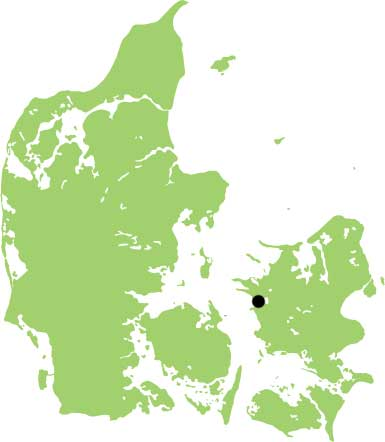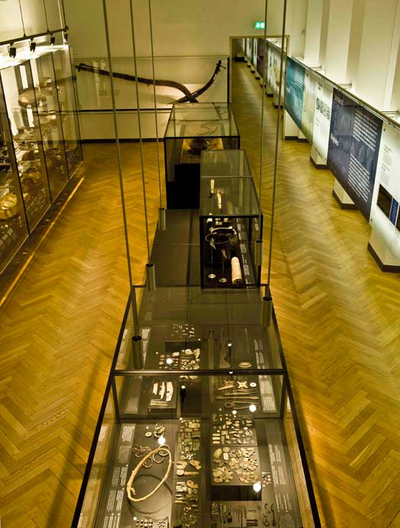The magnate dynasty at Tissø
In the Late Iron Age and the Viking Age there was a wide gap between rich and poor. The magnate families displayed their power and position with showy residences and large properties. Several magnates’ farms were built in the sixth century AD and remained in use into the Viking Age. The owners held banquets there for the leading figures of the country in mighty halls. The magnate had many functions in the society of the period. He was the protector of the population and often also a war leader. Sometimes he was a member of the king’s bodyguard, the hird. In addition, he presided over important religious ceremonies and organized markets for trades and crafts. Many of these activities took place at the magnate’s residence.
Cult buildings and place of sacrifice
The excavations of the magnate’s residence at Tissø in Western Zealand has revealed the circumstances of contemporary pre-Christian sacrificial customs. Cult buildings on the magnate’s residence and sacrificial sites in the landscape near has been excavated over the past decades, but it is not until today that we begin to understand their background and functions. Rituals ranged from great sacrifice feasts on the magnate’s residence, the sacrifice of weapons, jewelry and tools in the lakes and streams nearby, sacrifice of animals and objects at cult places, and even people. The Norse gods demanded sacrifices to fulfill wishes for fertility, war, happiness and prosperity.
The new archaeological findings explain more of the Old Norse sagas and the Edda’s which previously was hard to understand. The findings describe the Vikings' pre-Christian religion and its rituals. In sources such as the Old Norse sagas and the Edda’s, which were written in the Middle Ages, the author referred to sacrifices often grouped under the term blót. The modern archaeological excavations can now help to explain the Viking expressions blót (= sacrifice), hørg / horgr (= cult building / place of sacrifice) and hoof (= hall building).


